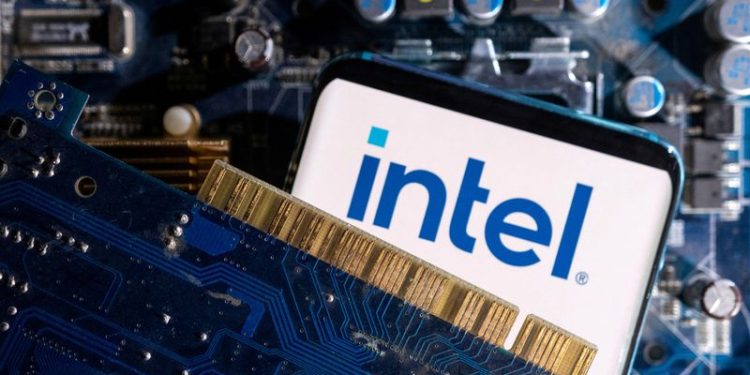By Max A. Cherney and Arsheeya Bajwa
(Reuters) -Intel published Thursday the results of the December quarter who beat the weak expectations of analysts, while his forecasts for income from the current district lacked estimates while the flea manufacturer is struggling with the request lukewarm for its data center token and investors are waiting for a new CEO.
The actions of the company based in Santa Clara, California, climbed 1.5% in trade after the opening hours. Last year, Intel shares lost around 60%.
While the flea manufacturer undergoes a historic transition and tries to get out of one of his darkest periods, he also had trouble taking advantage of an investment boom in advanced AI chips – a market Directed by Nvidia.
In his quarterly report after the closing bell, Intel said he provided turnover in the first quarter of $ 11.7 billion to $ 12.7 billion, compared to the average estimate of analysts of analysts 12.87 billion dollars according to data compiled by LSEG.
Companies that seek to capitalize on generative AI technology have prioritized expenditure for specialized AI processors that can transfer huge amounts of data, attract demand for traditional servers processors that Intel sells.
The company’s prospects for slower demand were due to “normal seasonality” and potential prices of the administration of President Donald Trump, the acting CO-PDG and the financial director, David Zinsner, in an interview.
The threat of prices prompted customers to buy more Intel chips before the first quarter to avoid higher costs if the managers implement the prices.
Zinsner said that the company’s objective was to ensure that operating expenses were around $ 17.5 billion for 2025.
Last year, Intel deleted a forecast of 2024 according to which she would sell more than $ 500 million from her new AI processors, named Gaudi, suggesting that they had a hard time competing with the chips of Nvidia.
On a basis adjusted by share, intel forecast, it would have the profitability threshold for the current quarter. Analysts expect an adjusted benefit of 9 cents per share.
He spends strongly to become a contractual manufacturer of chips for other companies, which led certain investors to worry about the pressure on his cash flows.
The former CEO, Pat Gelsinger, was ousted last month, leaving two temporary co-PDGs at the helm and envelop the intel recovery strategy in uncertainty.
The CEO of Co-Terim, Michelle Johnston Holthaus, said in an interview that “the search for the board of directors progressed” in her search for a new CEO and until the choice was announced “we are concentrated and We know exactly what to be done. “
Investors are looking for clarity around the future of the company that a new managing director would bring.


